“Great Rifle US Drama” (Rifles by countries and continents - 3)
Carabiner "Triplett and Scott."
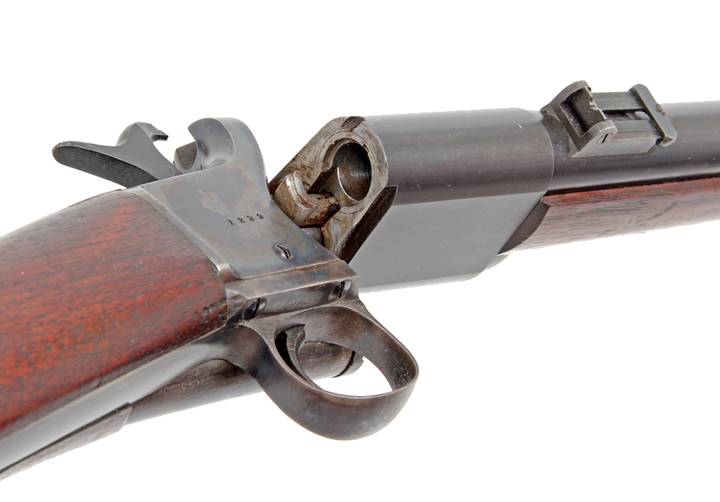
Carabiner "Triplett and Scott" in the process of recharging.
William Jenks, 22 of September 1845, invented a very original carbine. He signed a contract for the supply of .54 carbines for the US Navy. The first carbines were smooth-bore, but in the 1860-ies. They were converted into rifled. They produced them at Springfield arsenal in the amount of somewhere around 4500 units, and they also noted in the battles of the Civil War. For his unusual appearance, he was nicknamed “The ears of a mule,” and it should be noted that his design was indeed even more than strange. He charged through the hole in the upper part of the trunk. But the rear part of the bore was also open, but it was “getting a bit dirty” with a kind of “shutter” or piston, which was controlled by the lever located above. The trigger is located on the right. To charge the carbine, it was necessary to fold the lever back and withdraw the piston from the barrel. Then, through a hole in the barrel, insert a round bullet into the barrel and either pour the powder charge there with a special dispenser, or bite an ordinary paper cartridge and again pour the powder into the hole. After that, the lever was pushed forward, the piston also went forward and pushed the bullet and the powder forward until it stops, that is, until it hit the rifling grooves. The bore itself was covered by a piston. Now it was necessary to fold the trigger, put a cap on the brandtrubka, aim and shoot.
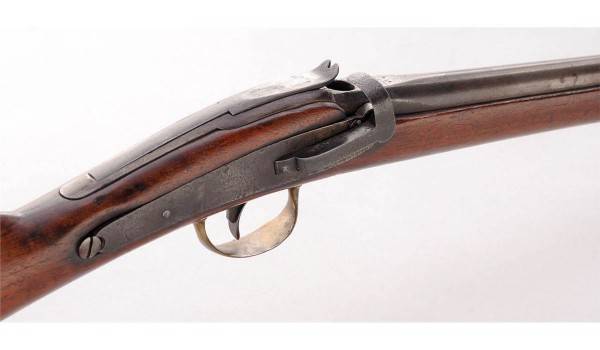
William Jenks Carabiner "Mule Ears"
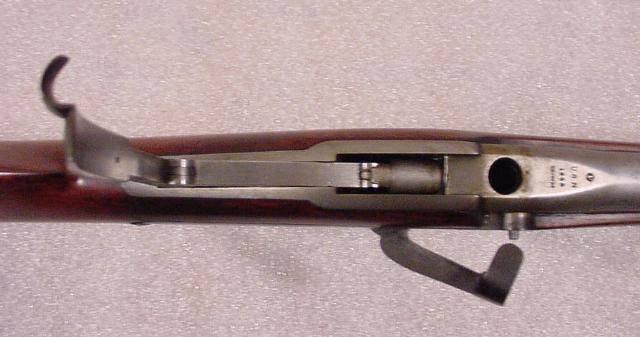
William Jenks carabiner - top view with the lever fully folded. The piston pusher is well visible.
Scheme from the patent of William Jenks, explaining the principle of his carbine.
B.F. Joslin designed his breech-loading .54 caliber carbine back in the 1855 year. In 1857, the US Army tested its carbines with 50, but the military refused to use them at that time because of a general bias against breech weapons. But in the 1858, the US Navy still ordered Joslin 500 carbines of his design (.58 caliber - 14,7-mm). For a number of reasons, Joslyn in 1861 was able to manufacture the entire 200 pieces. In the 1861 year, he remade his carbine under the metal cartridge of ring ignition and received an order from the Federal Department of Artillery on 860 of such carbines, which was completed in the next year, 1862. In the battles of the Civil War, the carbine proved to be good, which led to the fact that in the same year, Joslin was already ordered 20 thousands of such carbines. Shipments of the USA army began in 1863, although before it ended, she received only half of the ordered Joslinov. By the way, it was the guns of the Springfield-Joslin system that became the first truly massive "conversion weapons" in America. The reason was that they had a very simple tap valve and fired common .56 caliber cartridges with circular ignition.
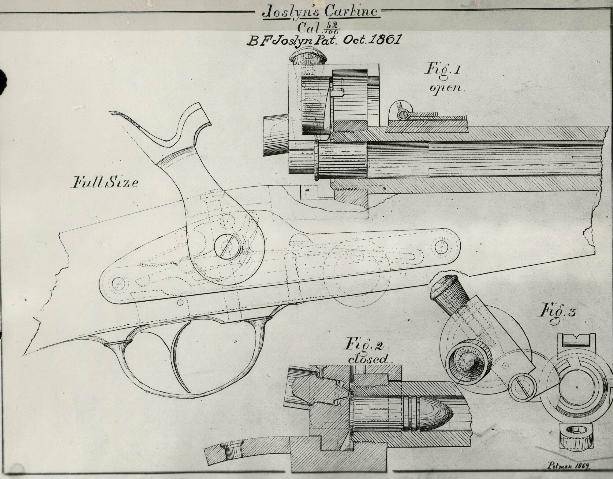
The scheme of the carbine Joslin of patent 1861 year.
The crane bolt of the breech-loading carbine Joslin obr.1861 year.
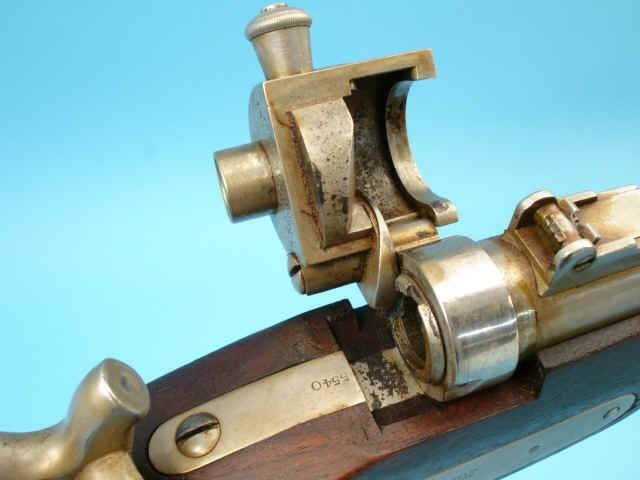
The open bolt of the booster carbine Joslin. Very simple device, right?
However, very soon this model was replaced with a 1865 model's rifle of the year or the “First Allin rework” - so named after the arms master of the Springfield arsenal of Erskine S. Allin. He reduced the caliber to .50 (12,7-mm), and moreover, in the original way: serial barrels of the .58 caliber to remove the rifling were reamed, after which they were heated and liners inserted into them. The shutter on them was used folding - forward-up, with a spring latch that did not allow it to open. A cartridge with central ignition impaled a spring-loaded drummer, on which he beat the usual trigger of the strike lock, which was retained by the designer. The shutter was opened only if the trigger was put on the half-platoon, that is, the sequence of loading techniques for the soldiers remained generally familiar.
Erskine Allin rifle bolt.
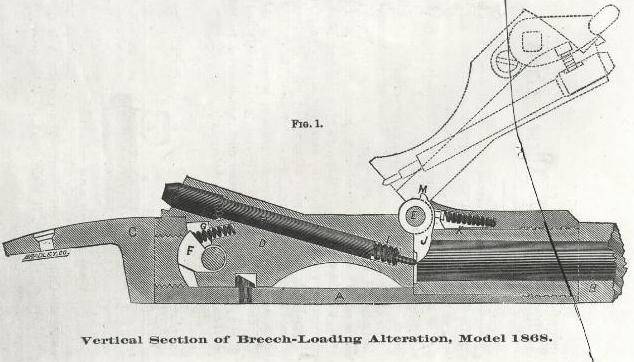 [/ Center]
[/ Center]Diagram of the Erskine Allyn 1868 rifle lock,
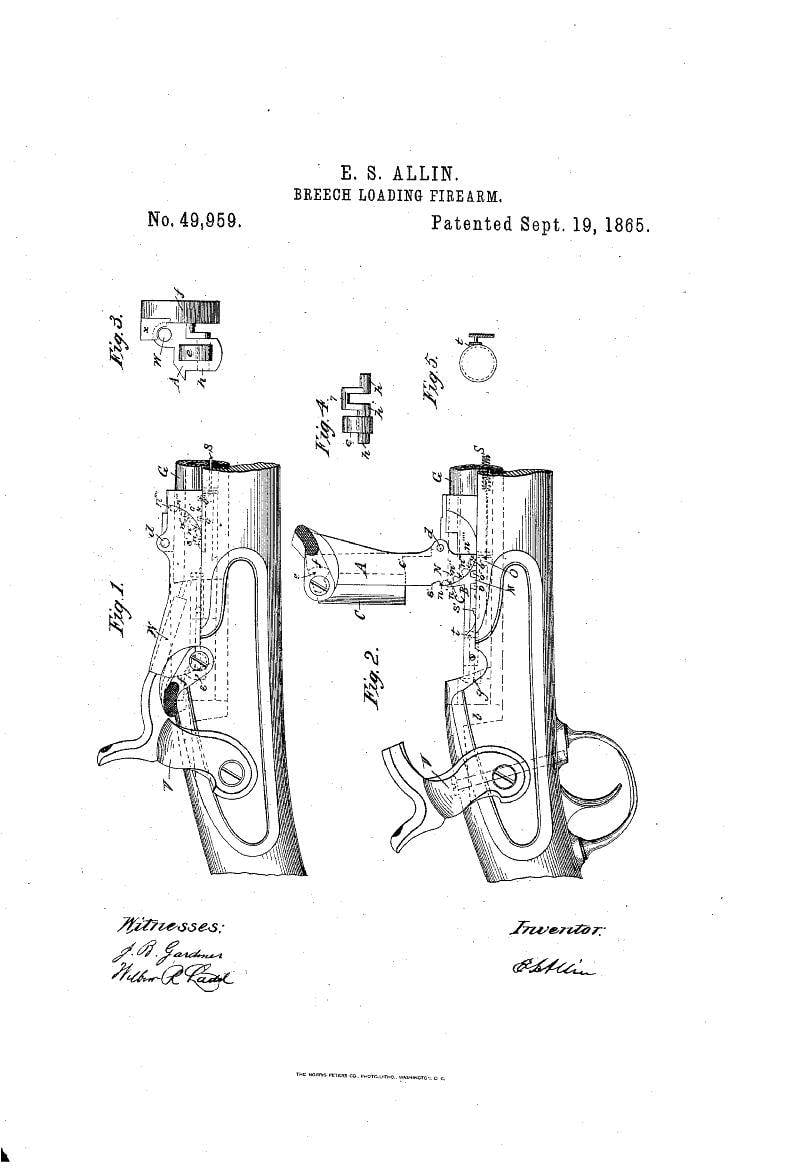
Scheme of the patent 1865.
The very next year, the Springfield Arsenal organized the production of a rifle of the 1866 model of the year or the “Second Allin rework”, which was produced until the end of the 1869 of the year. It was improved ejection sleeves, which was the weak point of all rifles with bolts of a similar device. However, the rifle rifles did not lie around in the arsenals, but almost hit the troops who fought with the Indians in the West. In total, around 100 thousand Allin rifle system rifles were manufactured using available stocks. In addition, the Springfield arsenal also began to rework for the new .50 caliber cartridges and breech-loading Sharps rifles. But Spencer's seven-shot rifles, which had a tubular magazine in the butt, were not subject to alteration due to the design features of its bolt.

Carabiner "Springfield" mod.1868 g. Standard weapon of the American cavalry, with whom she was defeated by the Indians in the battle of Little Big Horn in 1876 year.
Amid all this abundance of carbines (which is not surprising, since there was a lot of cavalry in the US military, and only in the Wild West could she alone fight!) Meinard's carbine was not enough to become one of the first rifled turning points; it was also quite widely used by both warring parties in the civil war between North and South. The cartridge to him had an unusual design: he had a metal sleeve with gunpowder and a bullet, but there was no capsule. The cap was put on the brand tube, and the powder ignited through a hole in the bottom of the sleeve, usually smeared with wax.

The cartridge to the carbine Maynard .50-50 (1865 g.). As you can see - only the "hole", there is no cap.

Maynard's carbine.
It was believed that such sleeves could be recharged many times, and this was usually the case, especially when they (most often the Southerners were engaged in it) were turned on lathes. However, the design was ill-conceived. The situation with obturation was bad: the gas breakthrough from the trunk back through this hole was quite strong. Occurred and the release of the trigger gases back that the arrows did not deliver the pleasure. However, over story with the Maynard carbine, it is quite “decent” - it was simply adapted to the usual cartridge of the central battlefield.
Confederation Cavalry with Maynard carbines. Fig. L. and F. Funkens.
In 1858, James H. Merrill from Baltimore also patented his .54 carbine. In the first version, paper cartridges were used, but in 1860, the second model appeared already under the metal sleeve. Initially, his carbine was considered as a sporting weapon, since it was distinguished by accurate shooting, with careful care was very reliable, but it had a rather complicated mechanism, and its parts were not interchangeable. Both sides actively used it, since at the beginning of the Civil War the Confederates managed to seize a large number of Merillin carbines and they armed them with cavalry regiments of the state of Northern Virginia. Southerners, not spoiled by modern weapons, liked it, but more scrupulous northerners believed that the carbine mechanism was too fragile. Therefore, by the year 1863 they were removed from the US Army. Meryl rifles were also produced, but only 800 of them were made.
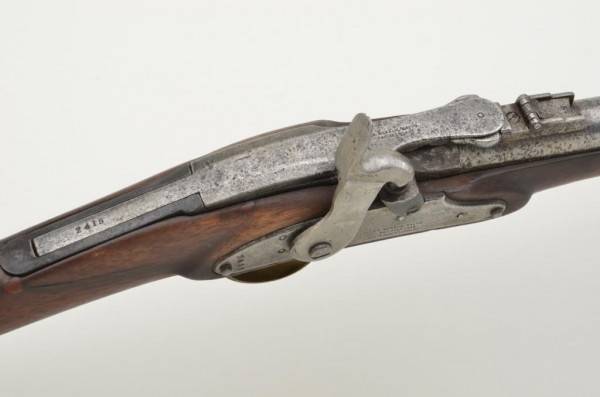
Carabiner Merill - shutter closed.
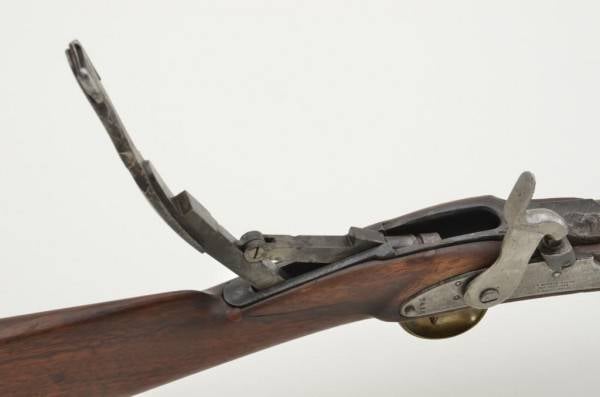
Carabiner Merill - shutter open.
Gilbert Smith's carbine was also widely spread in the army of northerners; he was supplied first to the fleet, and then began to arm them with cavalrymen and gunners. He received a patent for it 23 June 1857 of the year, but in mass production, like many other samples, he went only during the war. The barrel he broke on the principle of a hunting rifle. The weapon as a whole turned out quite good, but very much depended on the quality of the dressing. In case of bad gas, gas burst through the chambers of the chamber. Smith had an unusual cartridge: the bullet and powder charge were inside the rubber cylinder! The troops of the northerners got around 30 000 pieces of Smith's carbines with .50 cartridges of caliber.

Smith's kaznozaryadny carbine obr.1857 year.
However, the most unusual carbine in these years was created, perhaps, by James Durrell Green. Outwardly, he was not much different from his peers, but his device was really unusual. Under its barrel was a cylinder, on which there was a double coupling, and if the first covered this cylinder, then the second - the trunk. On the trunk itself, too, was worn feet, and the trunk was turning freely in both sleeves. The trunk was fastened with two L-shaped clips, marked in the figure from the patent with the letters "M". When turning the trunk, they included two protrusions that were in its rear part.
The scheme of the Green carbine device from the description of the patent.

This carbine had two triggers. After pressing the front barrel, all the couplings uncoupled, the barrel retreated forward, and then folded back to the right. Now an ordinary paper cartridge was inserted into the barrel.
During his return stroke, the barrel locked in its original position, and besides, moving backward, he also shifted the cartridge to the stud in the breech of the bolt mechanism, which pierced the shell of the cartridge, and the gases from the capsule fell to a powder charge. The carabiner had a length of just 837 mm, with a barrel length 457 mm, weight 3,4 kg and caliber .55 (14 mm). The speed of the bullet was 305 m / s, which was very good at that time. The military was very much bribed with paper cartridges, but they ... were easily spoiled and damp. Total in the period 1859-1860. The Waters Armory firm in Massachusetts has produced about 4000 - 4500 such carbines. 1500 was sold out in the USA, but only 900 units went into the army. The rest of the rifles sold to Russia. Interestingly, the carbine has no standard cuts. Instead, the oval bore is a Lancaster cutting system. And it was the first such design, adopted by the American army.
Similar to this system was the development of James Paris Lee, but his carbines released very little.
During the war years of the North and the South, the so-called "Allied carbine" was also known. 52 caliber, developed by Edward Gwin and Abner C. Campbell, Hamilton, Ohio, also belonging to the capsule systems. It was produced from 1863 to 1864 year and became the successor to the Cosmopolitan carbine, produced by the same enterprise. To reload the weapon, a serpentine-shaped trigger guard was used, which opened the breech opening, but no magazine was provided for, and the cartridge was a regular paper one.
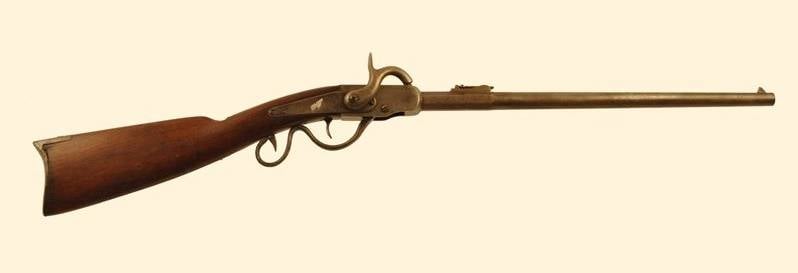
"Allied carbine"
The New York-based Ebenzer Starr company was known for its revolvers, which even successfully competed with the famous Colts. Starr paid great attention to all the latest weapons technology and constantly improved his samples. In 1858, he developed a carbine that combines the best qualities of the Sharps, Smith and Burnside systems. And which was distinguished by good accuracy with a relatively low cost of its production. Although the Sharps still shot a little more precisely, the Starr, which was immediately put into service, came in handy due to the lack of weapons in the civil war. Only 1861 to 1864 year produced more than 20 000 copies. The 1858 model of the year was loaded with paper and linen wrappers throughout the war. But in 1865, the government ordered 3000 "starrs" for metal cartridges, which then released 2000 carbines of this version. This was the case in the war years, but after it, Starr's company could not compete with the famous Winchester and ceased to exist in 1867.

Starr breech rifle 1858 model of the year.
Ever since the wars with seminoles, so colorfully described in the novel by Mine Reed “Osceola, the leader of seminoles”, in the USA there was an increased interest in rifles and carbines with drum magazines. The simplest way to turn a revolver into the same carbine was to attach a butt to it and lengthen the barrel.
Revolving carbine "Le-Ma"
But there were also some original designs that were not related to revolvers, for example, the Manassas carbine of the 1874 model of the year, double action, .44 caliber, designed by gunsmith Potiphar Howell. Interestingly, this carbine can be considered the immediate predecessor of the famous ... "revolver", because it used a system of pushing the drum on the barrel in order to protect against gas breakthrough and long brass cartridges with a recessed bullet - a complete analogue of the later Naganovskys! Howell himself, who received a patent for his design, called it a “dual gas seal” system. Several samples of this type of weapon were produced, but the army was not interested in them because of its high cost.
Revolving carbine "Manassas".
Some projects are striking in their originality. For example, the Morris and Brown patent from 1869 of the year, looking at which, it is easy to see that the drum mechanism in it is stationary, and the trigger hidden in the bed (actuated by a lever arm) hits the capsules of a special rotating nozzle located behind the drum shop. When fired, the round bullet moved first along the inclined channel (!) From the drum to the barrel, and only then it fell into the barrel itself. That is, twice during the shot, changed the direction of movement. Of course, such a system is fully operational. But ... not with the accuracy of processing the mating metal surfaces that existed at that time.
The scheme of the drum rifle Morris and Brown.
And as a conclusion, let us think about the headache that the supply of all this “arsenal” delivered during the Civil War in the USA. Truly there was drama, so drama ...
To be continued ...

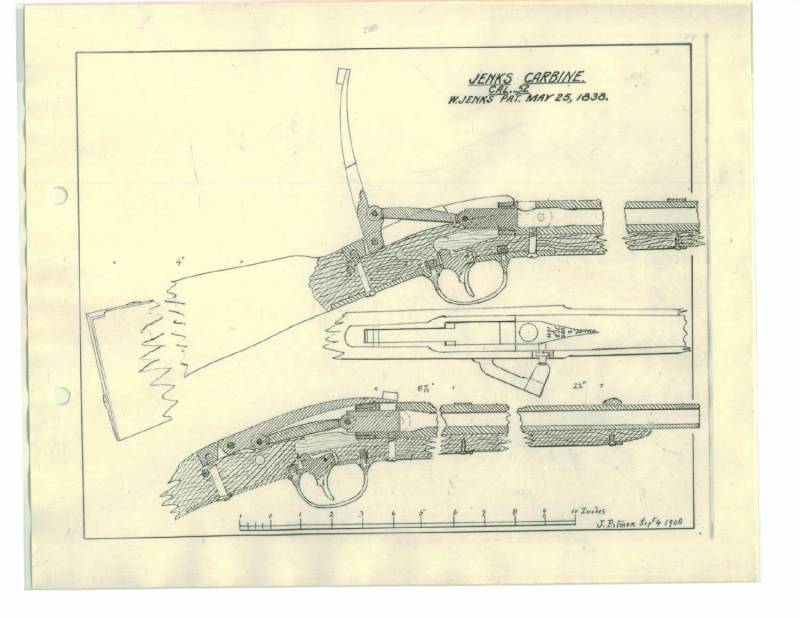
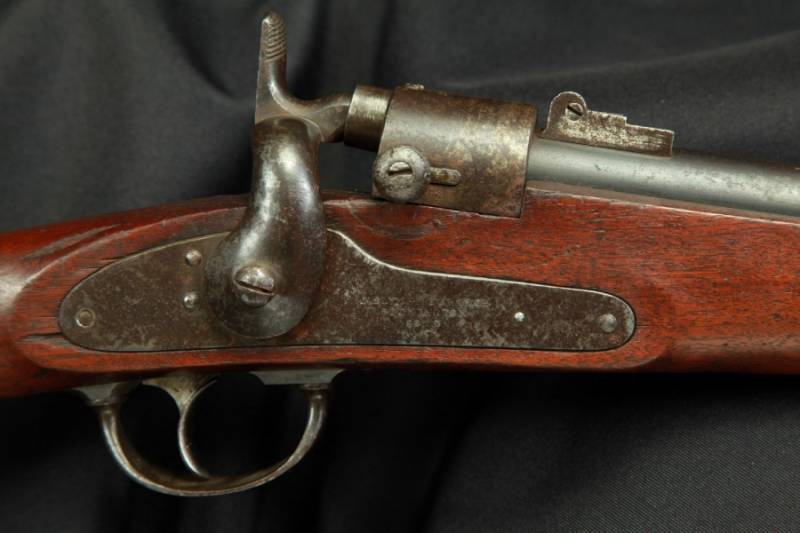
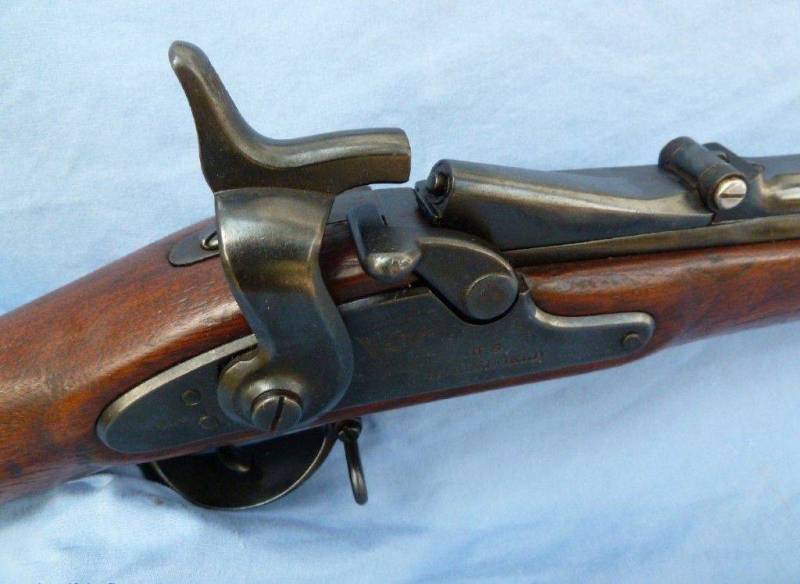
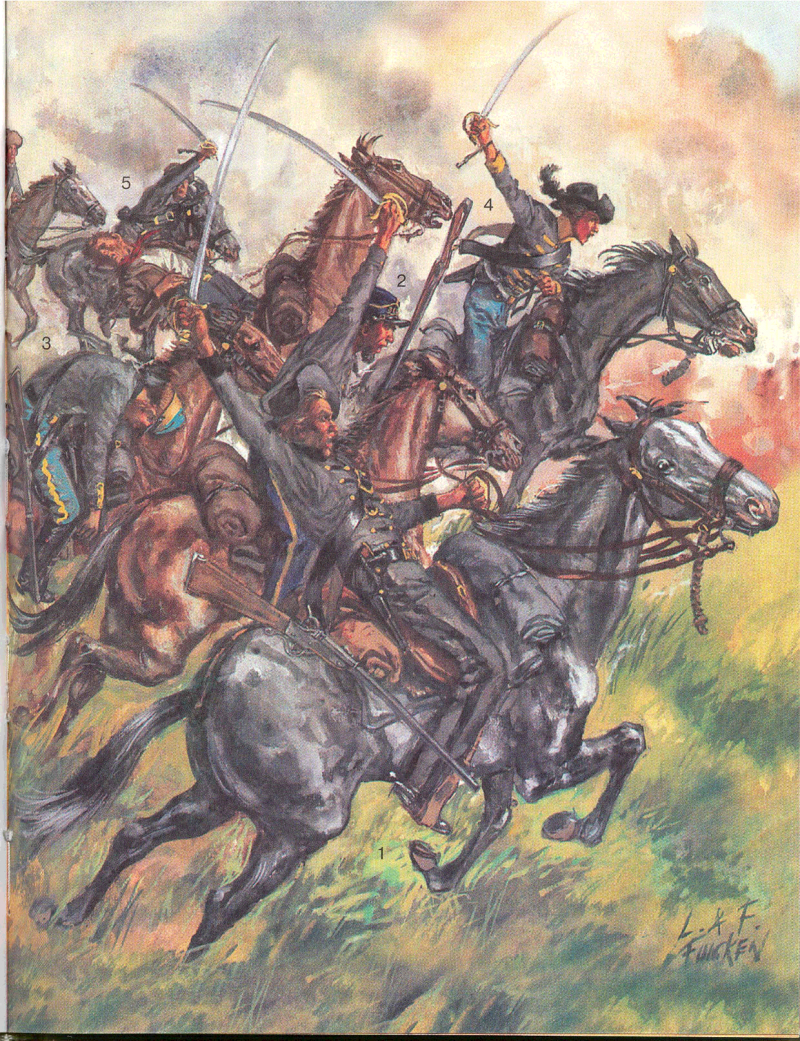
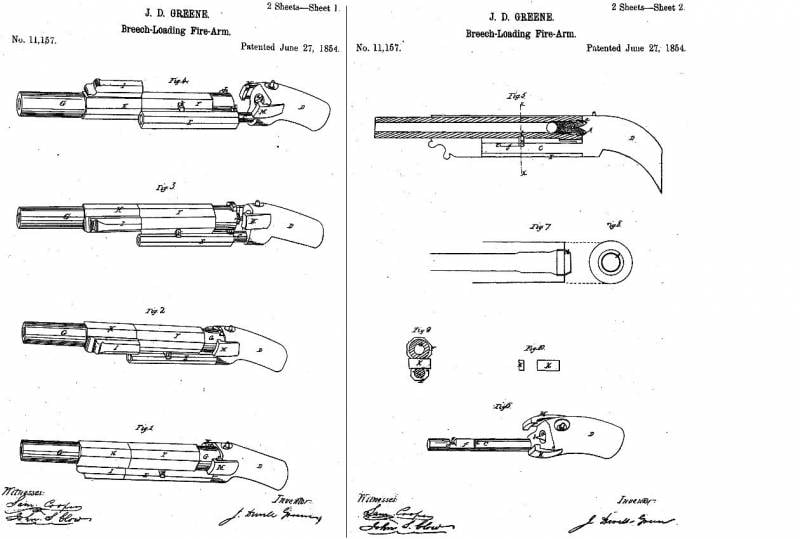


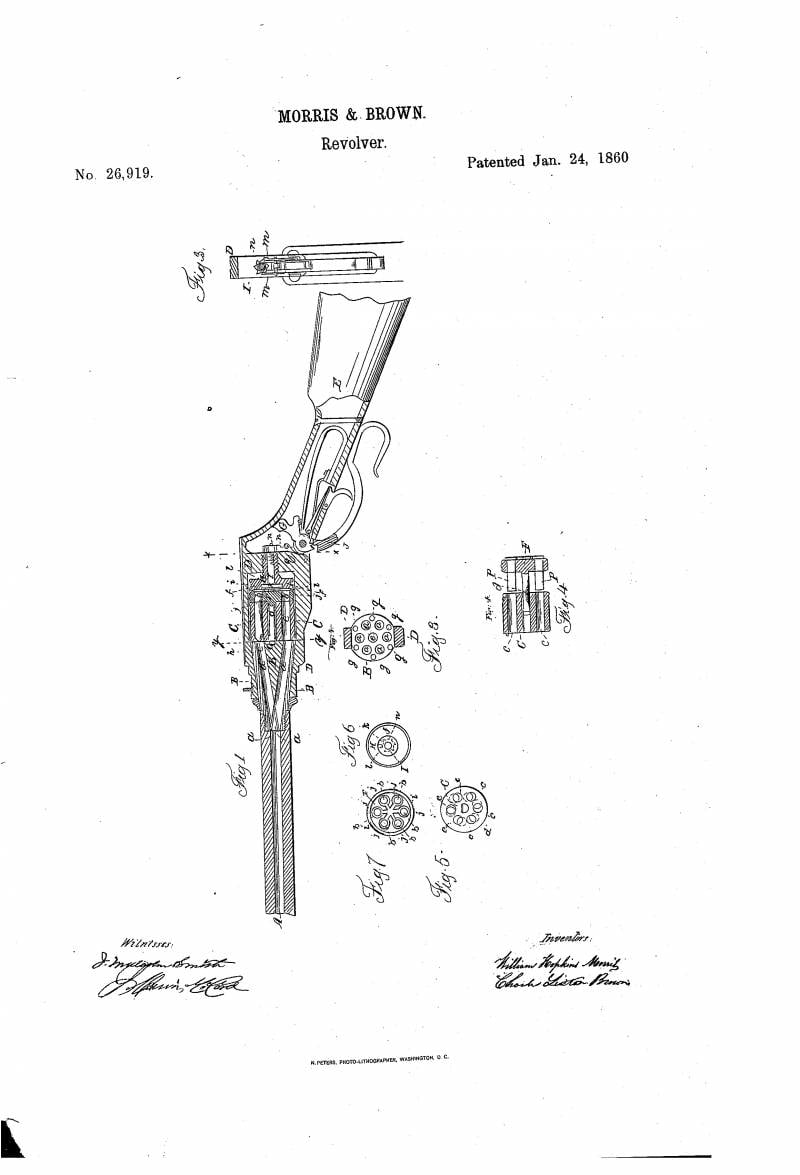
Information